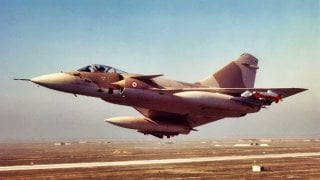Dassault Mirage 4000: The Futuristic Fighter Plane France Almost Flew
The Dassault Mirage 4000, despite its advanced design and high capabilities, failed to enter full production, making it a notable example of unrealized potential in aviation history.
Summary: The Dassault Mirage 4000, despite its advanced design and high capabilities, failed to enter full production, making it a notable example of unrealized potential in aviation history. Built as a twin-engine, heavier counterpart to the Mirage 2000, it featured canards, a bubble canopy, and powerful SNECMA M53-2 turbofan engines. Although it excelled during 336 test flights, achieving speeds of Mach 2.3 and demonstrating significant weapon capacity, the Mirage 4000 never found a buyer. The Royal Saudi Air Force chose the Panavia Tornado instead, and the French Air Force preferred the Mirage 2000, leaving the Mirage 4000 without a market. Its sole prototype now resides in the Paris Air and Space Museum, its technological advancements having informed the later Rafale fighter.
Dassault Mirage 4000: The Forgotten Giant of French Aviation That Never Took Off
The history of aviation is littered with projects that never broke through and reached full production. The Dassault Mirage 4000, for example, never got past the prototype stage. Only one Mirage 4000 was ever built. It flew in the 1980s before the project was canceled and mostly forgotten, leaving aviation enthusiasts to wonder what might have been.
One and Done
Derived from the Mirage 2000, the Mirage 4000 was larger and heavier than its single-engine forebearer. Built around two SNECMA M53-2 turbofan engines, the Mirage 4000 was further distinguishable from the Mirage 2000 by the small canards above its engine intakes and the addition of a true bubble canopy.
Of course, despite the differences, the two Mirages were quite alike. Both aircraft featured a delta wing and semi-conical Oswatitsch-type air intakes. The Mirage 4000 measured 61 feet long with a 39-foot wingspan, 19-foot height, and a wing area of 790 square feet.
The derived jet had a gross weight of 35,494 pounds and was able to carry 2,900 gallons of fuel internally. The SNECMA M53-2 turbofan engines provided 14,500 pounds of thrust each when dry and 21,400 pounds of thrust each with afterburning engaged.
Financed privately as a Dassault venture, the Mirage 4000 made its first flight on March 9, 1979. Comparable in size to the American F-15 Eagle, which had debuted a few years earlier, the Mirage 4000 was built to serve as a long-range interceptor and a fighter-bomber.
Capable Performance Specs
Over the course of 336 test flights, the Mirage 4000 showed high capabilities.
With a crew of one, the Mirage 4000 achieved a top speed of 1,519 miles per hour, or Mach 2.3. The jet had an approach speed of 160 mph and a total range of 1,200 miles.
The jet’s combat range was 1,150 miles with external fuel tanks attached. The Mirage 4000 could reach a ceiling of 66,000 feet and could climb at a rate of 60,000 feet per minute.
At combat weight, the jet could wing load at a rate of 45 pounds per square foot, with a thrust-to-weight ratio of 1.2.
The Mirage 4000 could be outfitted with a variety of advanced weapons. Built with two 30 mm DEFA cannons featuring 125 rounds per gun, the Mirage 4000 also featured 11 hardpoints with a capacity of 17,637 pounds.
The hardpoints could be configured to carry combinations of: up to three 660-gallon drop tanks; FLIR pods; a Recce pod; a laser designator pod; ALTIS III; up to four rocket pods; two long-range air-to-air missiles; 8-14 advanced AAMs; up to four air-to-ground missiles; or up to twenty-seven 551 pound bombs.
A Window Closed
Originally, Dassault had intended to export the Mirage 4000, but that opportunity faded somewhat quickly when the Royal Saudi Air Force opted to buy the Panavia Tornado, and the Iranian Revolution led to a regime in Iran that was hostile toward the West. The French Air Force also passed on the Mirage 4000, preferring instead to focus on the Mirage 2000. Accordingly, the Mirage 4000 was left with no customers.
The lone Mirage 4000 made its last flight on Jan. 8, 1988, and now rests at the Paris Air and Space Museum. Expertise gained from the prototype influenced the development of Dassault’s venerable Rafale fighter.
About the Author: Harrison Kass
Harrison Kass is a defense and national security writer with over 1,000 total pieces on issues involving global affairs. An attorney, pilot, guitarist, and minor pro hockey player, Harrison joined the US Air Force as a Pilot Trainee but was medically discharged. Harrison holds a BA from Lake Forest College, a JD from the University of Oregon, and an MA from New York University. Harrison listens to Dokken.


